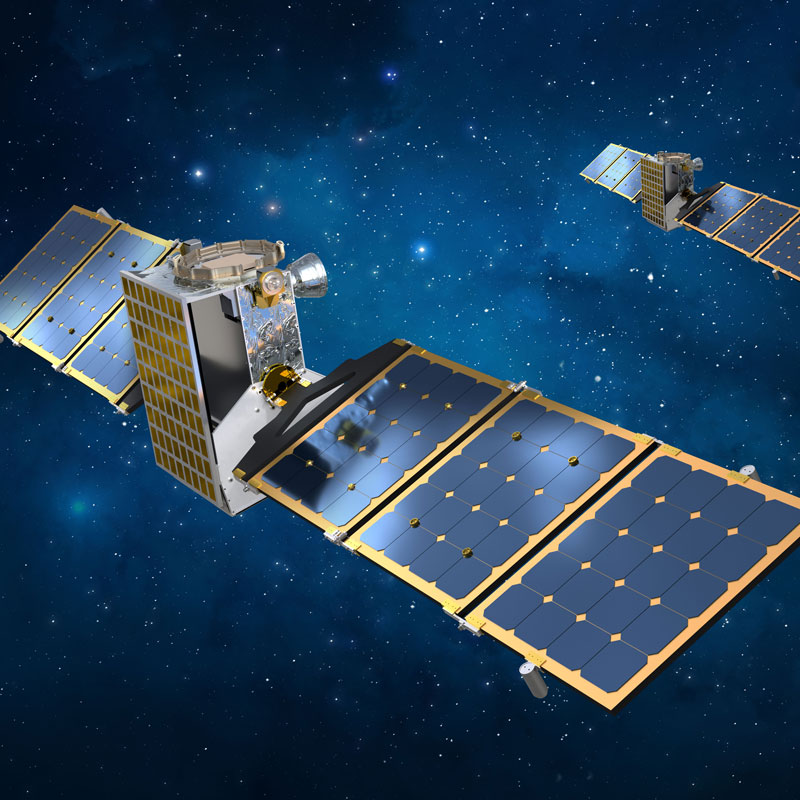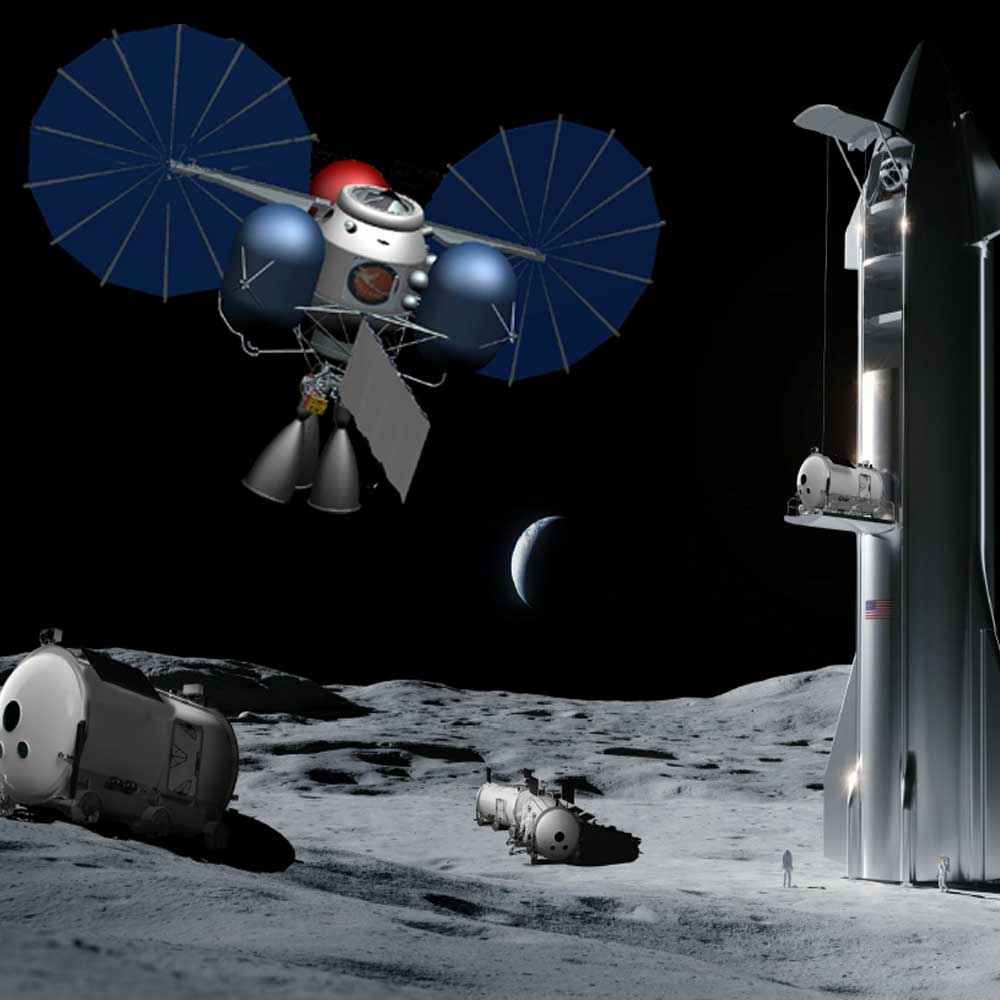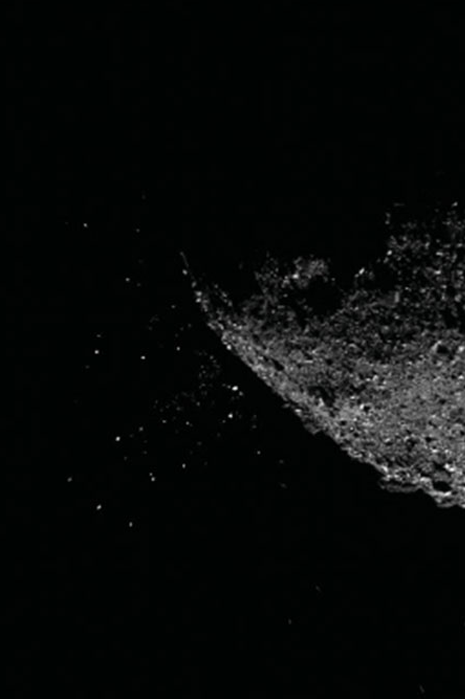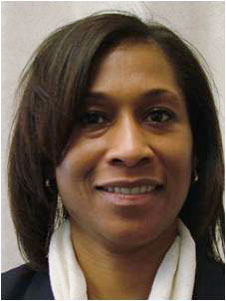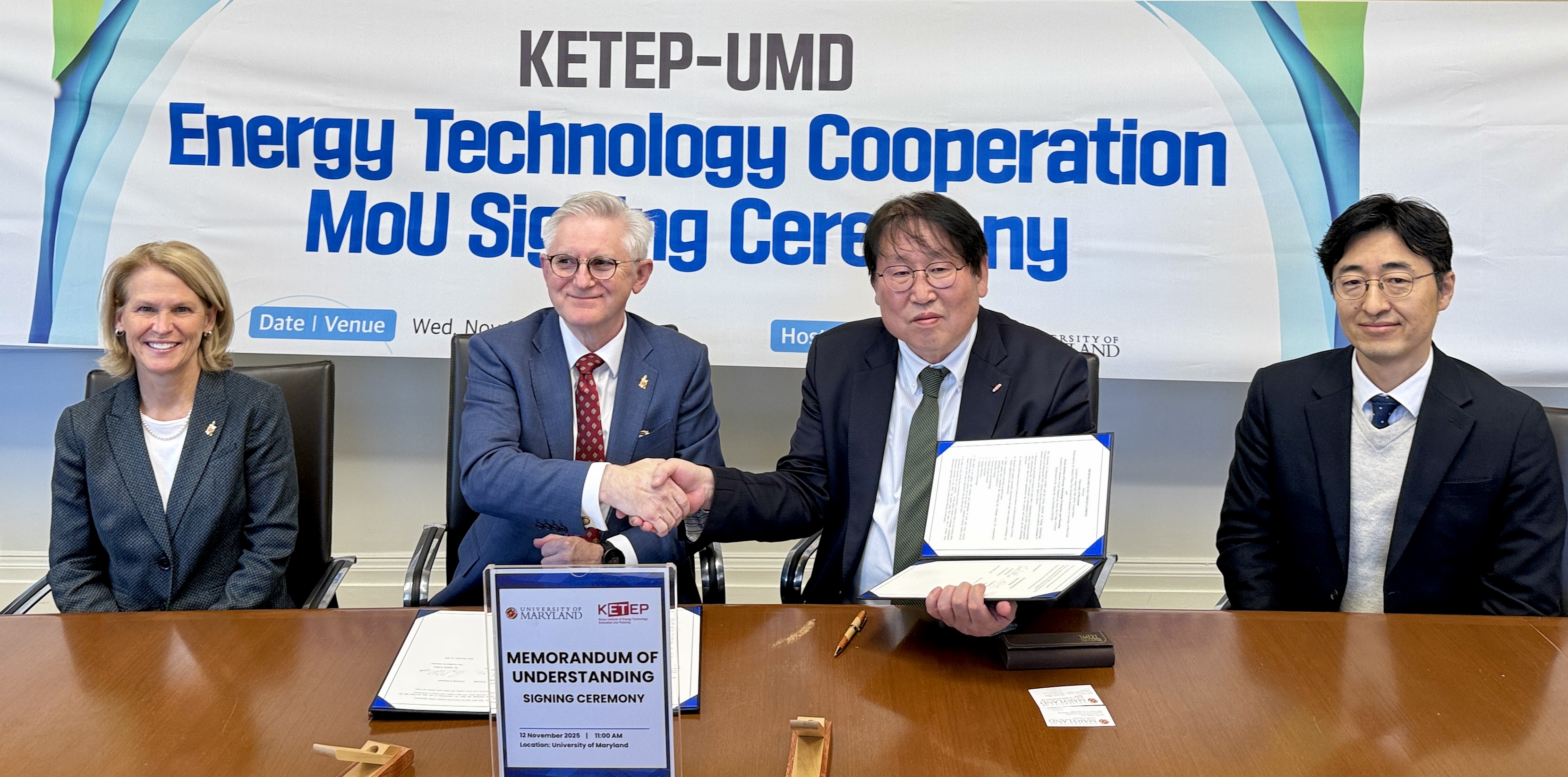Soliton Signatures: A New Strategy for Tracking Teeny Tiny Space Debris
August 12, 2025
There is a lot of junk in space, millions of pieces in fact, and much of it, smaller than one centimeter in size, is currently untraceable.
As Earth’s orbit becomes increasingly crowded, it is critical to track all potentially damaging debris—because despite their small size, pea-sized pieces of junk traveling at speeds upwards of 17,000 miles per hour can inflict incapacitating damage on spacecrafts.
To address this invisible threat, Department of Aerospace Engineering Professor Christine Hartzell and her team at the University of Maryland are looking at another unseen phenomenon in space: plasma solitons.
Solitons—a special type of wave that propagates through the ionosphere without changing shape or dispersing—are created when debris moves through space. So Hartzell has proposed, if you can track the waves, you can track the debris.
“The main concept of the technology is that with this really small debris, since you can’t locate it with current conventional technologies, we could potentially observe the plasma signatures generated by the debris, instead of the debris itself,” explained Hartzell.
Her team set the stage for this novel approach by previously modeling how orbital debris might generate these solitary waves under specific conditions. They found that debris size, speed, and altitude all influence the soliton’s behavior.
“The unique part of these soliton waves is that they don’t dissipate like a normal wave,” Hartzell said. “There are pinned [plasma] solitons that stay with the debris, and then there are precursor solitons where that plasma wave grows in amplitude, detaches and moves upstream [of the debris].”
Now, with new funding awarded through NASA’s Innovative Advanced Concepts (NIAC) Program—which supports visionary technologies five to ten years out from application—the team is focusing on two technical hurdles: interpreting the solitons once they’re detected, and designing a system that can detect them reliably.
“Right now, our models ingest the debris characteristics and produce a model of the soliton,” Hartzell explained. “But if you want to operationalize this, you’re going to detect the soliton, and you’d like to know what type of debris created it… you can’t do that analytically. That’s why we’re using machine learning.”
Solving this “inverse problem”—working backwards from observed soliton signatures to determine debris properties—is a major computational challenge. Hartzell is partnering with Assistant Professor John Martin, an expert in machine learning with space applications, to build a model trained on synthetic data that can infer debris size and speed from soliton waveforms.
“There are two different applications for this concept,” Hartzell said. “One would be space-based, such as a fleet of satellites with instruments that detect the plasma density, and send that data for analysis, or it could be a ground-based system where radars measure plasma density at high enough resolution to see these signals.”
If successful, the technology could vastly improve space situational awareness.
The soliton technique has some limitations: It only works at the intermediate altitudes of low-Earth orbit, where the plasma density is just right. But that also happens to be where most new satellite traffic is heading. With the rise of mega-constellation networks like Starlink and growing interest from commercial and defense sectors, congestion in space is increasing rapidly.
Looking ahead, the team plans to simulate different mission architectures, refine their machine learning models, and develop a roadmap for future deployment. If the Phase II study succeeds, it could lay the foundation for a new class of debris monitoring systems. Ones that don’t rely on seeing the debris at all.




